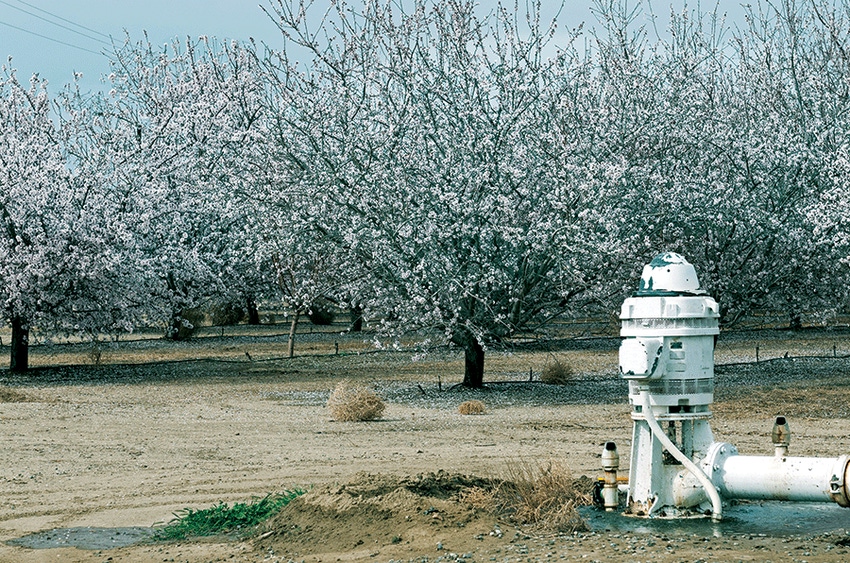
Growers should lay and secure their irrigation lines in a way that allows for temperature changes and other factors that can cause the lines to expand and contract, says University of California Cooperative Extension Research Associate Cameron Zuber, who’s based at Merced. He’s noticed different ways that growers have secured their irrigation tubing as he has conducted surveys throughout the county.
Many lines were attached using a stake made of wood or polyvinyl chloride in which the tubing is tied, while other orchards had the lines wrapped around a tree and used as an anchor for the line, Zuber notes in a post on UCCE’s The Almond Doctor blog. Other lines were staked directly into the ground.
These setups could be problematic as the season goes along and temperature changes and usage affect the plastic, he says. This can include water and air moving through the system.
While securing tubing is necessary, in that it keeps the emitters and micro-sprinklers in place and helps maintain irrigation efficiency, not doing it the right way can cause issues, he says. Among them is the added cost and time to secure and maintain the tubing. Further, lines may contract after fixing, which could pull them off the riser. Then if the lines are too tight, they can cut into and girdle the tree, he warns. “All of these are preventable,” he says.
TIPS FOR GROWERS
For those who want to secure the end of the irrigation tubing, he offers a series of tips. Leave some slack in the tubing, he says. When tightly secured tubing contracts, coupling points can become undone or cause the plastic to stretch, creating weak points that could break.
For this reason, farms should consider securing tubing in the winter, when it’s colder and it is unlikely there will be problems with contraction. Cold tubing that doesn’t have enough slack will just expand and create the slack that was needed, but hot tubing that contracts will weaken, he says.
Growers should be wary of using trees to secure tubing. Wrapping tubes around the tree may cut down on supply costs, but it could also girdle the tree if done too tightly.
Make sure to “do it right,” Zuber urges; securing tubing takes time and money. “There is a lot of power in the contraction and expansion of irrigation tubing, and a poorly installed system will eventually fail.”
He reminds growers that the end goal is a well-irrigated field. Whether or how to secure tubing is up to the grower — but if it’s done correctly, it can help accomplish that goal, he says.
For Zuber’s full blog post, visit https://bit.ly/2R5I3jq. For more information on irrigation management and agronomy, go to http://cekern.ucanr.edu/Irrigation_Management/.
About the Author(s)
You May Also Like






